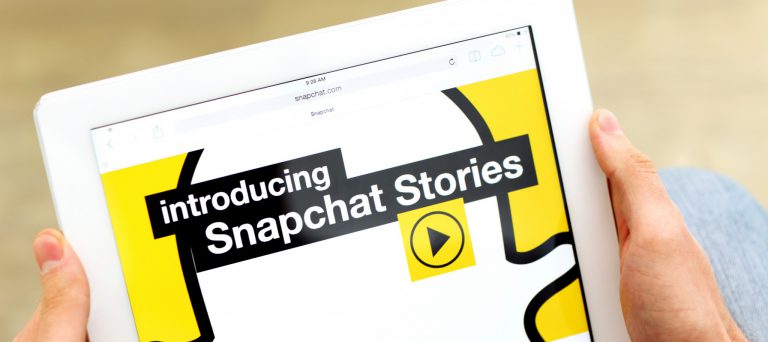
Every social media platform goes through the same stages of development; from its anarchic beginnings with new users excitedly exploring and overusing it to its cool, trendy teenage years when people flock to sign up to its inevitable comfortable middle age at which point any new feature or design change is greeted by confused hostility.
Snapchat’s development has taken place at high speed. Rewind just six months: the picture-sharing app was mainly used for people to send drunken selfies to each other, safe in the knowledge any embarrassing evidence would be erased from the recipient’s phone after ten seconds. But privacy concerns – culminating in last month’s ‘Snappening’ – mean the app’s development has accelerated to middle age.
But far from dying – or ‘doing a MySpace’- it feels like the possibilities of Snapchat are being explored in exciting new ways. Channel 4 News piloted the use of WhatsApp and Snapchat in its coverage of the Scottish independence referendum in September to try and reach a younger audience, and now universities are waking up to the potential of Snapchat in recruiting and communicating with students. And why not? 700 million messages are exchanged using the app every day, and younger people are turning away from established platforms like Facebook because they are mortified about having to deal with a friend request from their parents.
The use of Snapchat within university marketing teams is being pioneered in the US, particularly after a marketing study there which found that three-quarters of university-level students on social media use Snapchat every day, and are mainly happy to open snaps from unfamiliar brands or people that fall outside their group of friends. The benefits are obvious, with new snaps popping up directly on the user’s phone, it is an immediate way to reach people without the message being lost in the clutter of a newsfeed or timeline.
But at the moment it is only US universities that are embracing Snapchat’s potential. Brittany Shope, the web coordinator at Tennessee Wesleyan College told USA Today: “Snapchat is immediate, personal and reaches the student where you can find them most: on their phone.
“To reach out via a smartphone application like Snapchat as opposed to students’ e-mails makes the student feel like the college has taken extra steps to get in touch with them.” Shope says that she uses the app for everything from marketing material about events on campus to fun, quirky little snaps of what life is like within the university. As Time magazine reported earlier this year, the University of Houston uses Snapchat to let students know when classes are cancelled because of bad weather.
It’s easy to see how this could be extended to keeping in touch with prospective students. Again, Tennessee Wesleyan is leading the way. The college ran a Snapchat ‘scavenger hunt’ on a university open day earlier this year, where subscribers to the college’s Snapchat account received five picture clues throughout the day to the whereabouts of the college’s bulldog mascot – Wesley. For young applicants, official letters and glossy brochures can seem fusty – and even a little daunting, and the personal, intimate and somewhat informal nature of Snapchat may help erase a few of those fears.
As Shope again put it, this time to Time: ““Of course you want the prestigious acceptance letter, but I think students also enjoy having the wall brought down and being able to communicate with the institution that they have chosen. ”
“They may see something in the mail and throw it away, but they are always looking at their phone.”
Universities in other parts of the world will need to play catch up. In the UK, institutions are spending millions giving their campuses a facelift and building huge blocks of new student accommodation to adapt to the lifting of the cap on the number of students they can take on. This is creating an ultra-competitive arena for the top universities, but should they be doing more to concentrate on more sophisticated marketing techniques to communicate with young people where they’re most comfortable? With Snapchat’s biggest market being 13-23 year-olds, it seems an obvious platform to focus on.
But a 2013 study shows that UK institutions have a long way to go, with students saying they trusted university correspondence through traditional means more than they did on social media. And one student surveyed really put their finger on the issue that needs to be addressed – “”they do not talk about the things we need to know”.
That last comment is not a UK-only symptom, but something that universities across the globe need to think about. As young people adapt and embrace new technologies at breakneck speed, crusty old university marketing departments must react. Mastering the art of the Snapchat selfie would be a welcome start.







